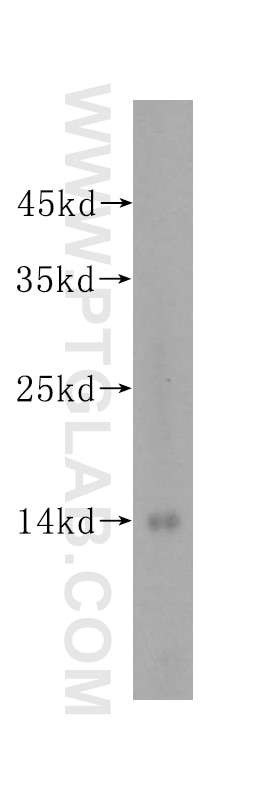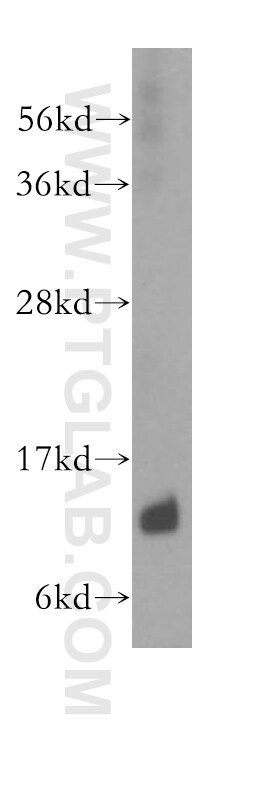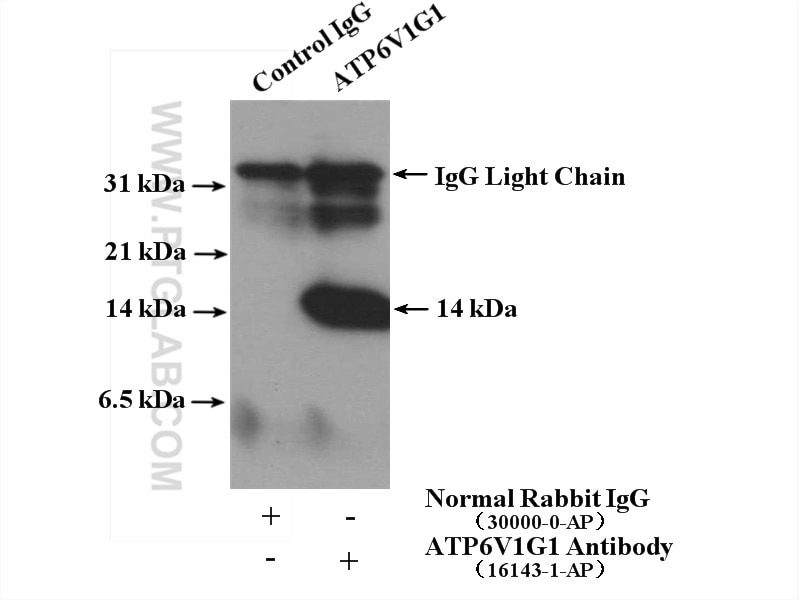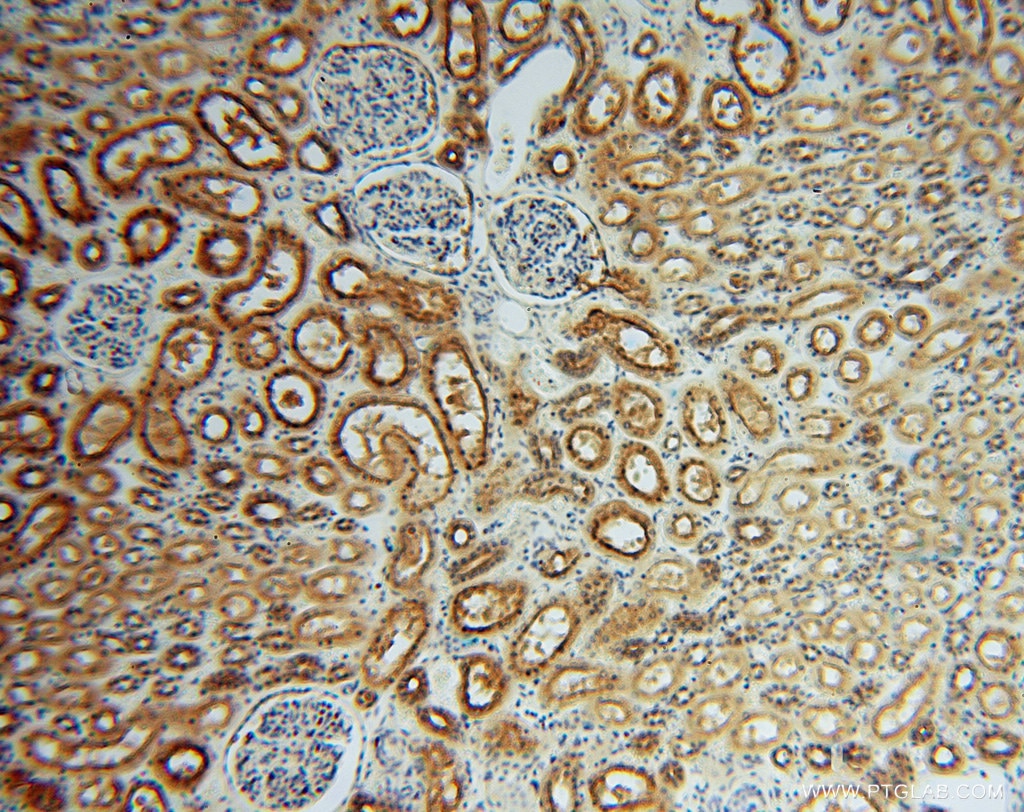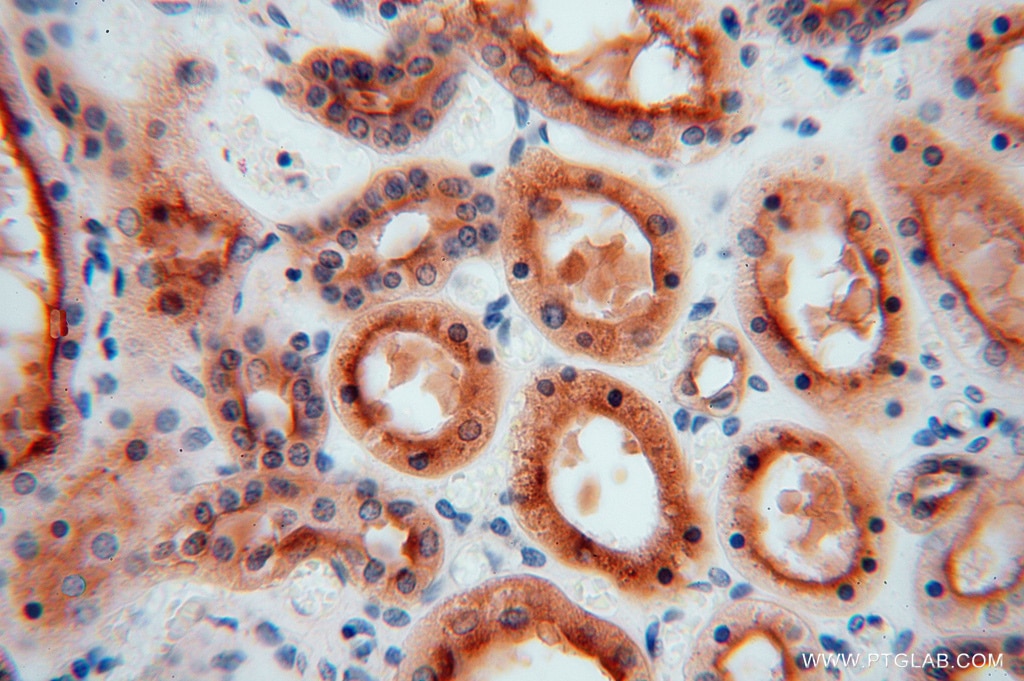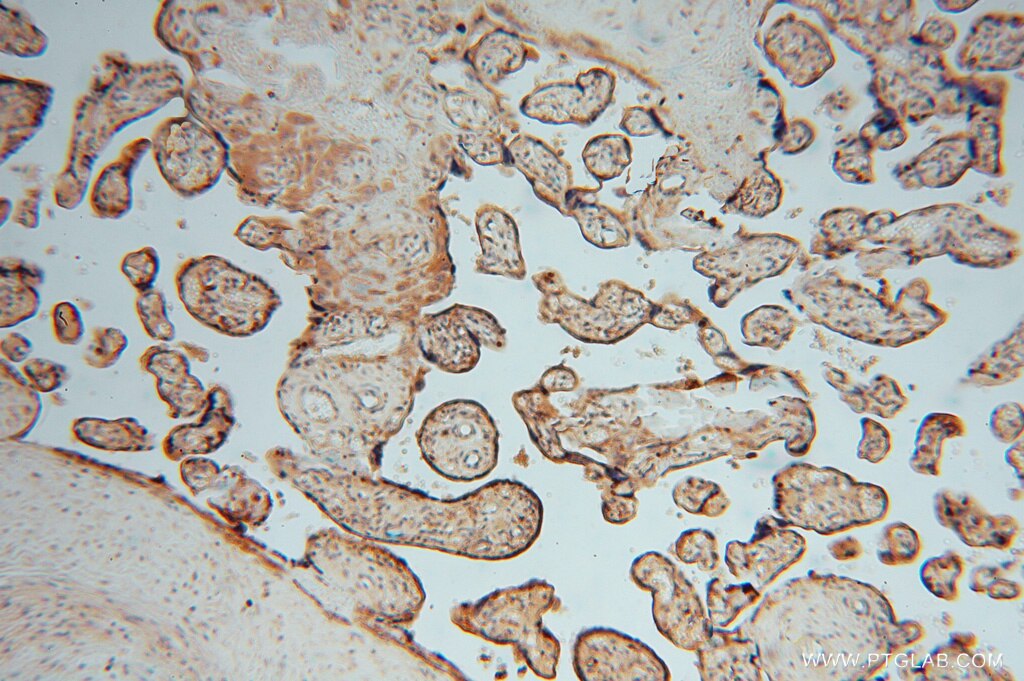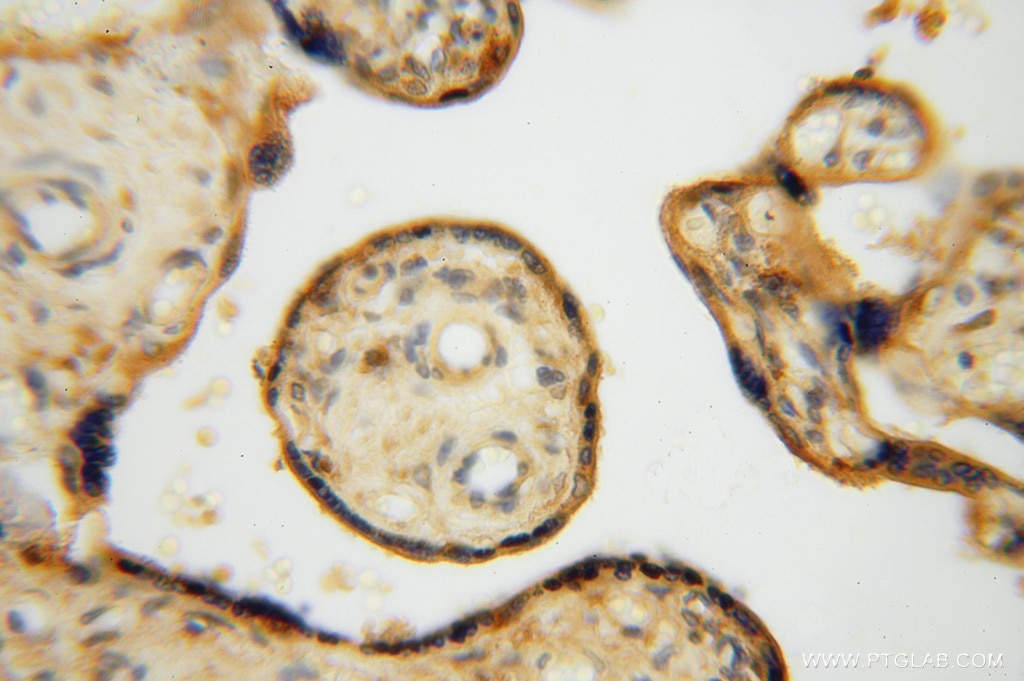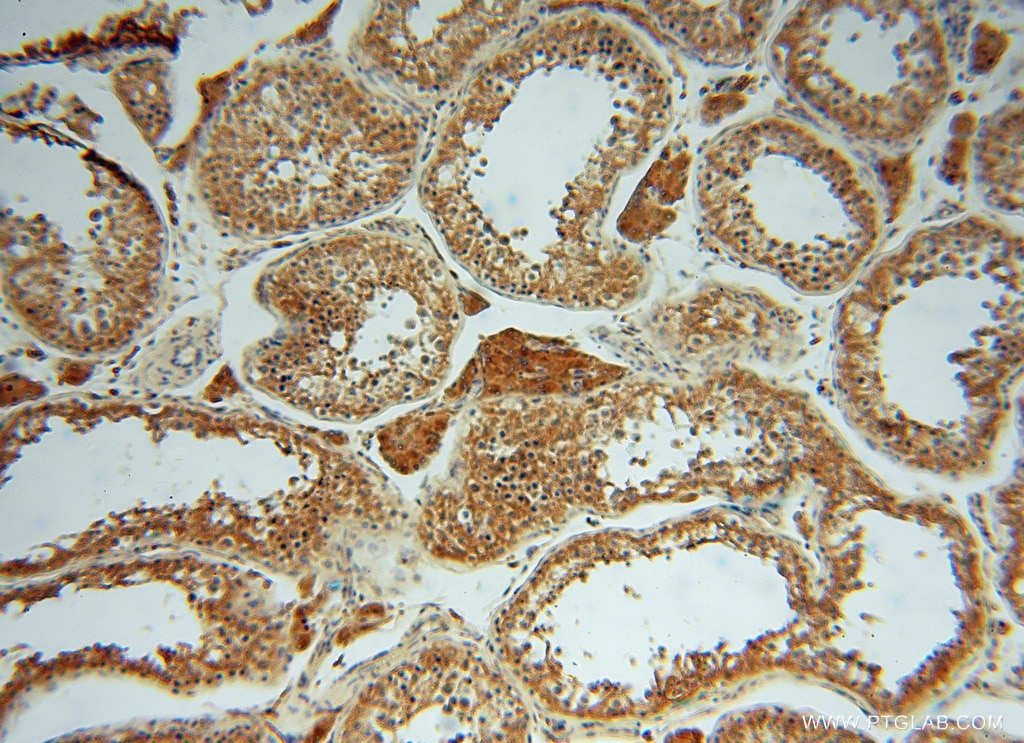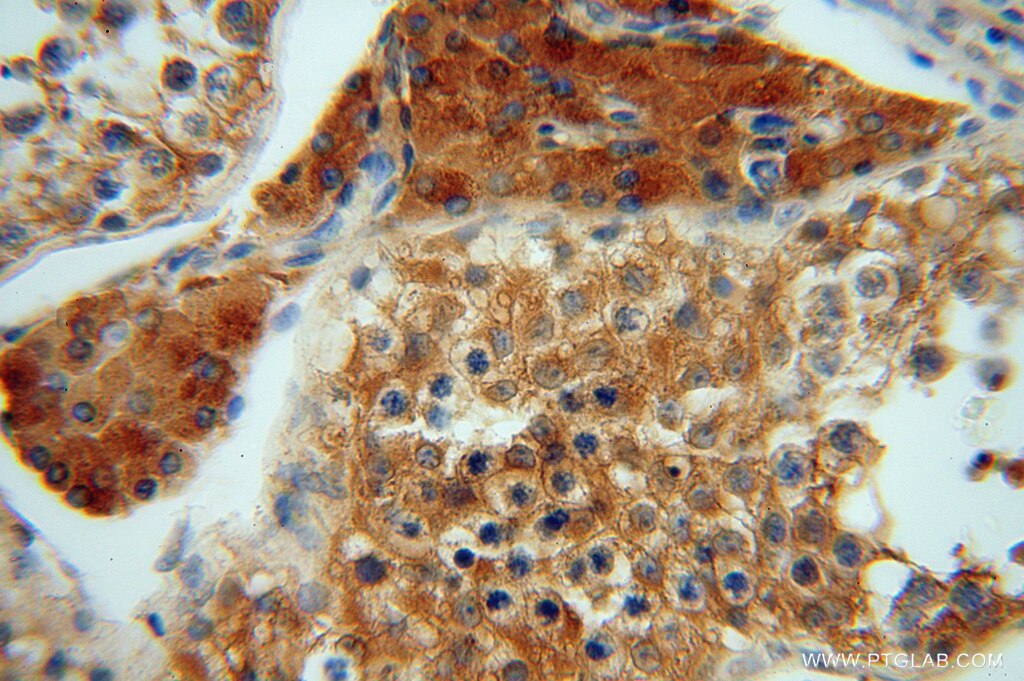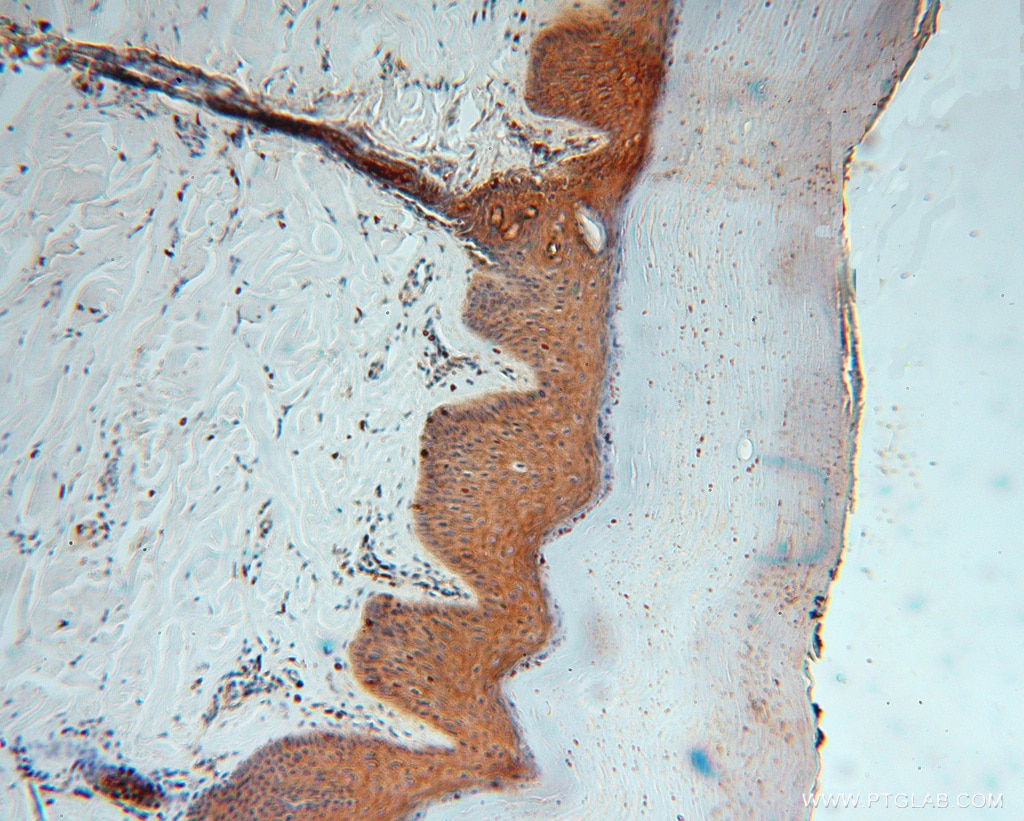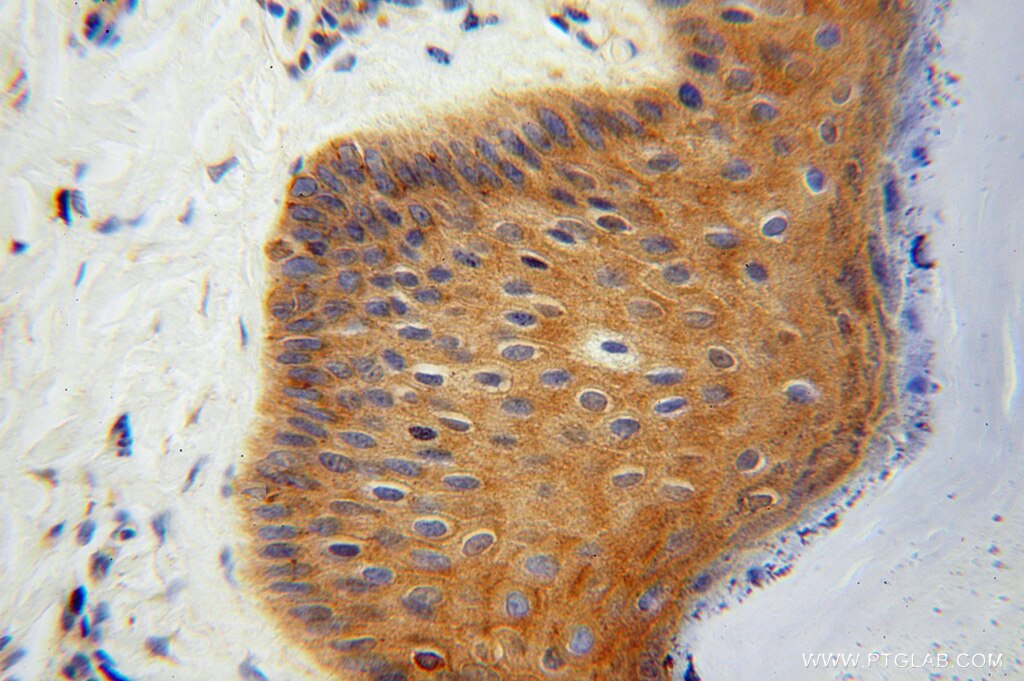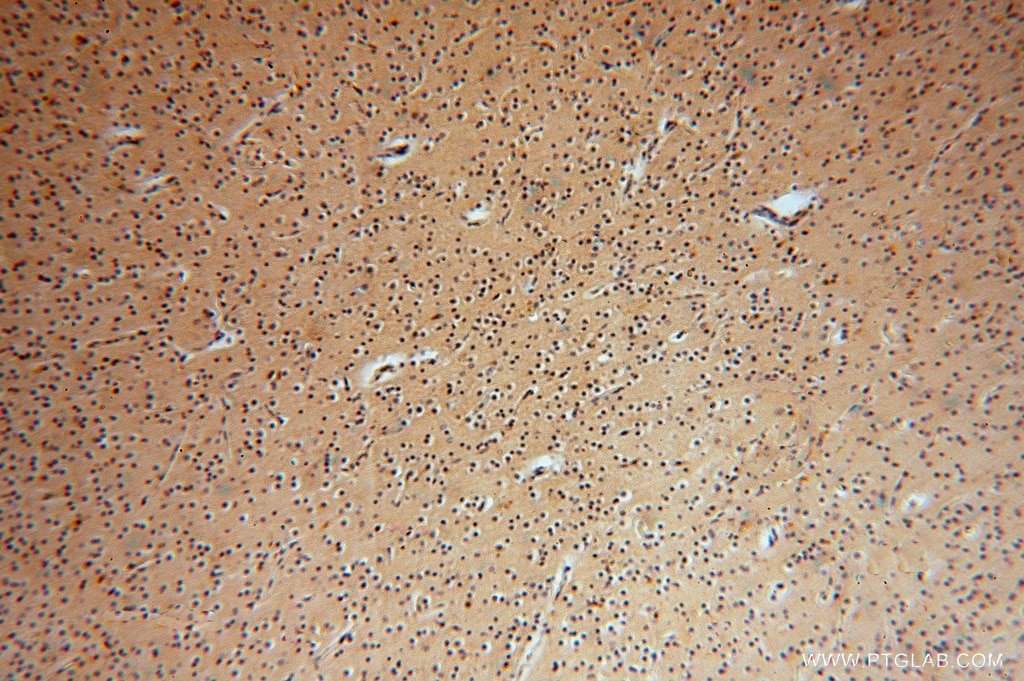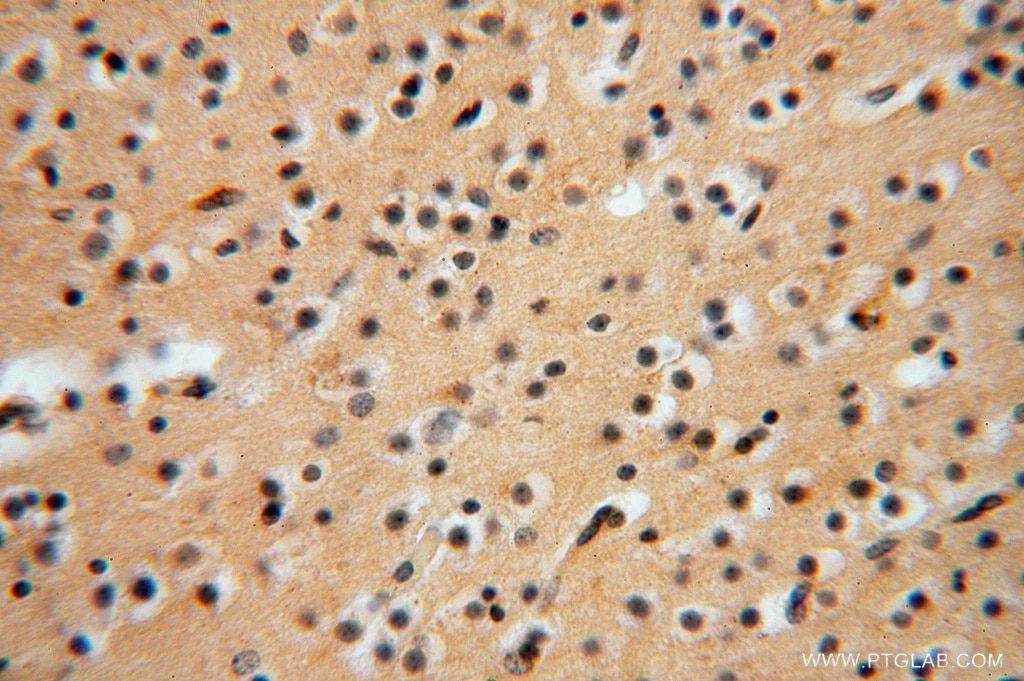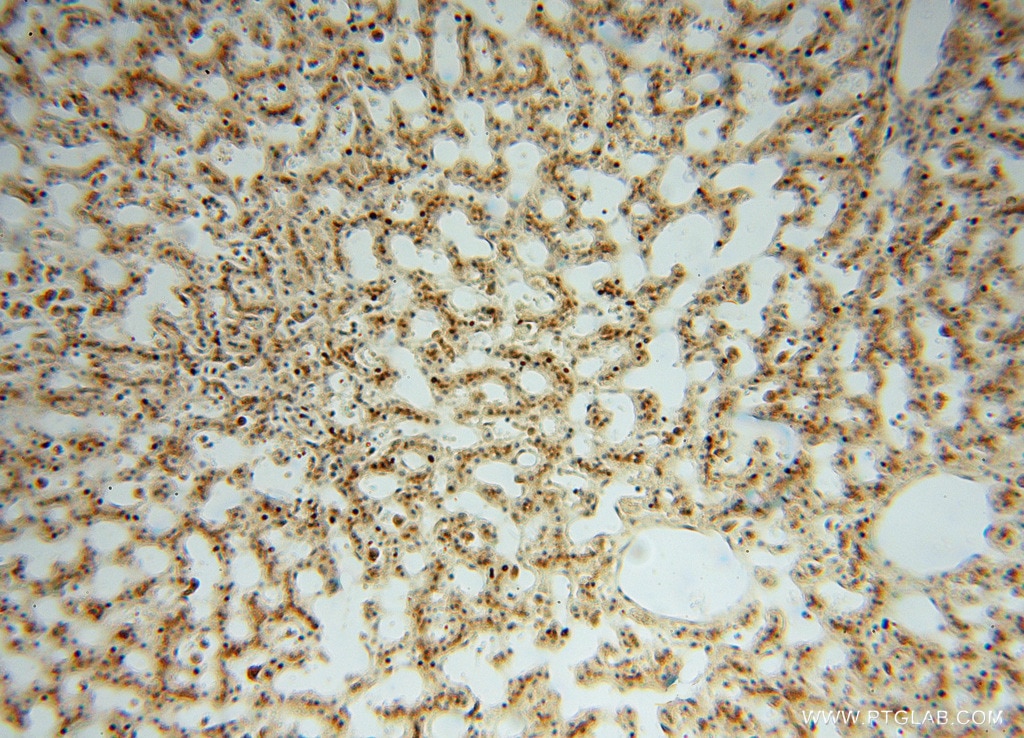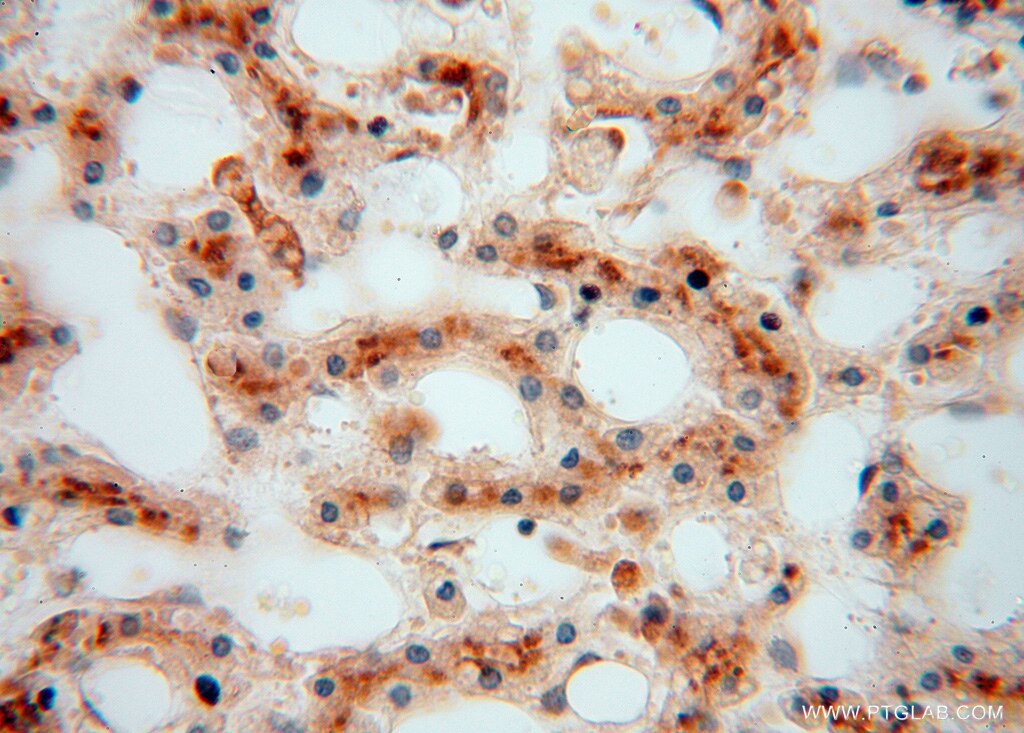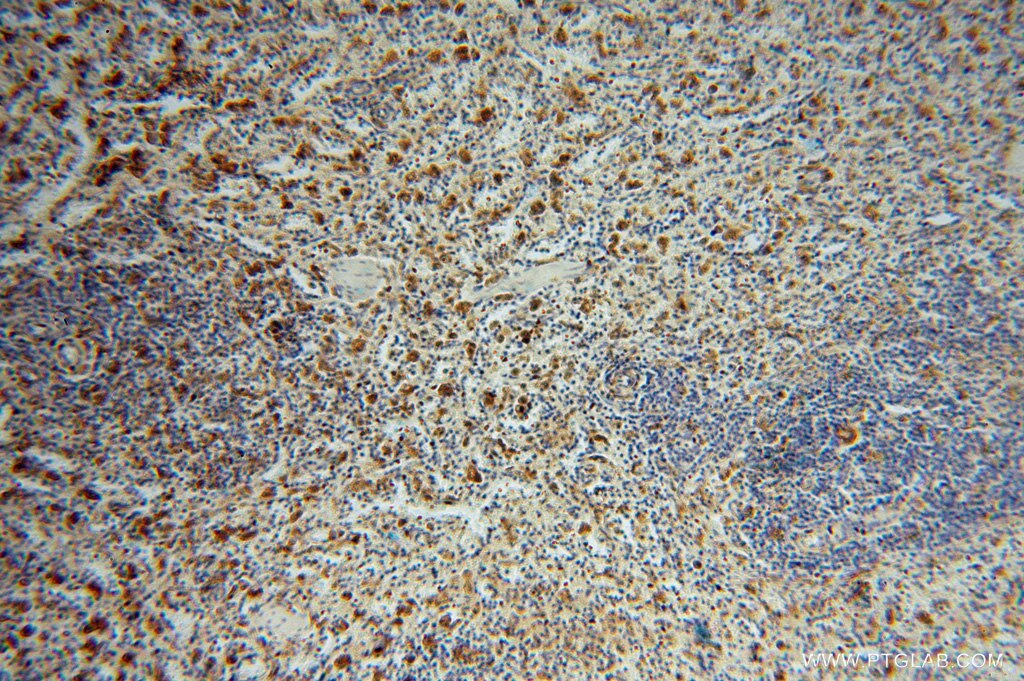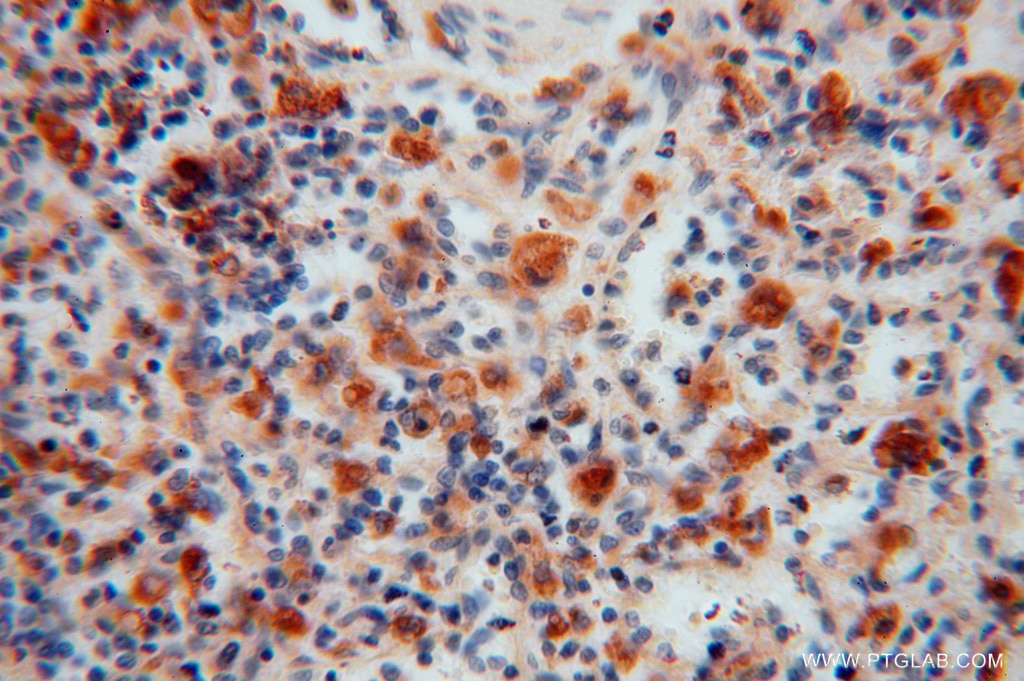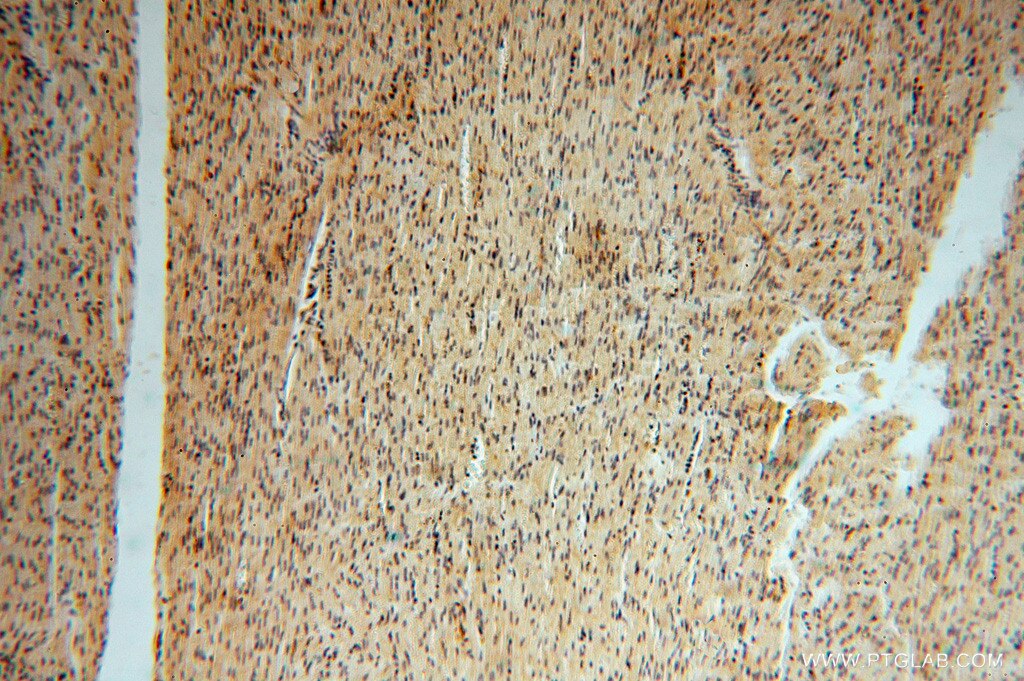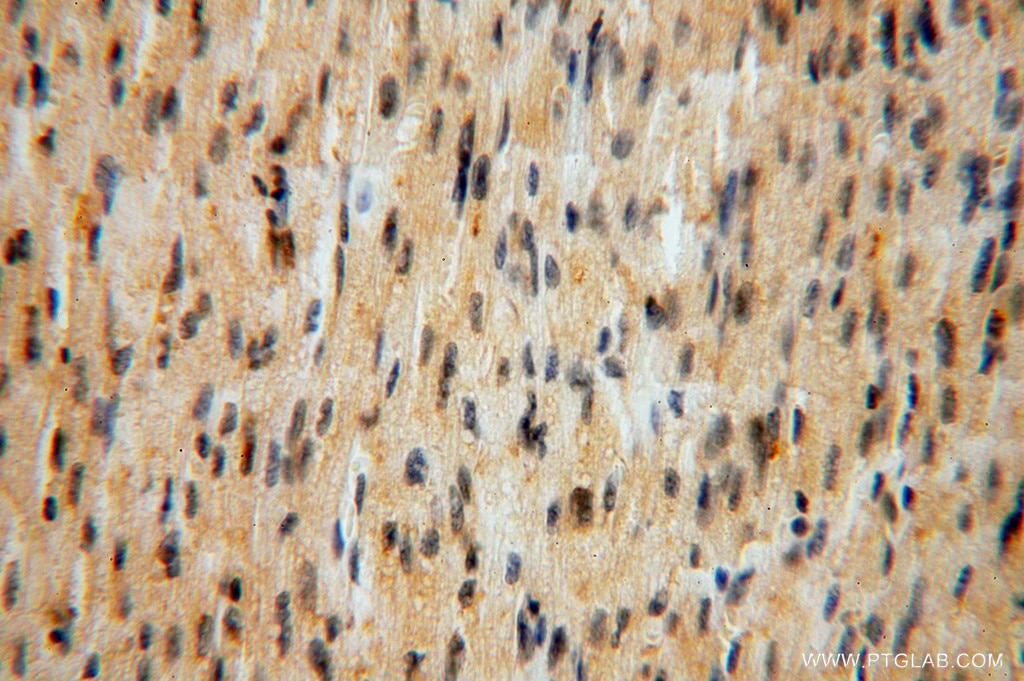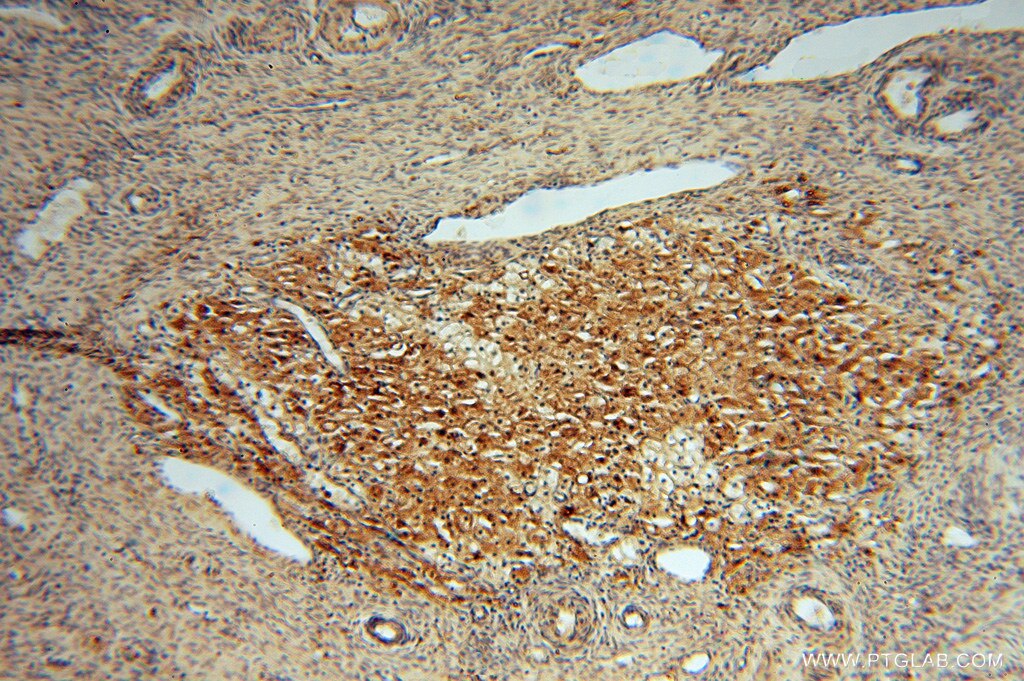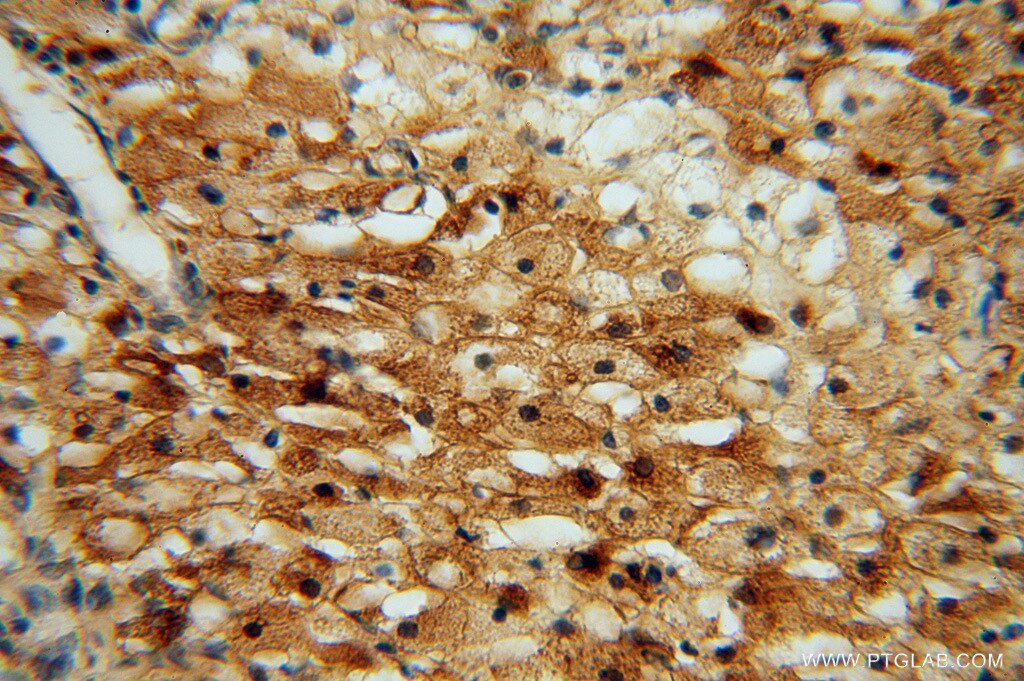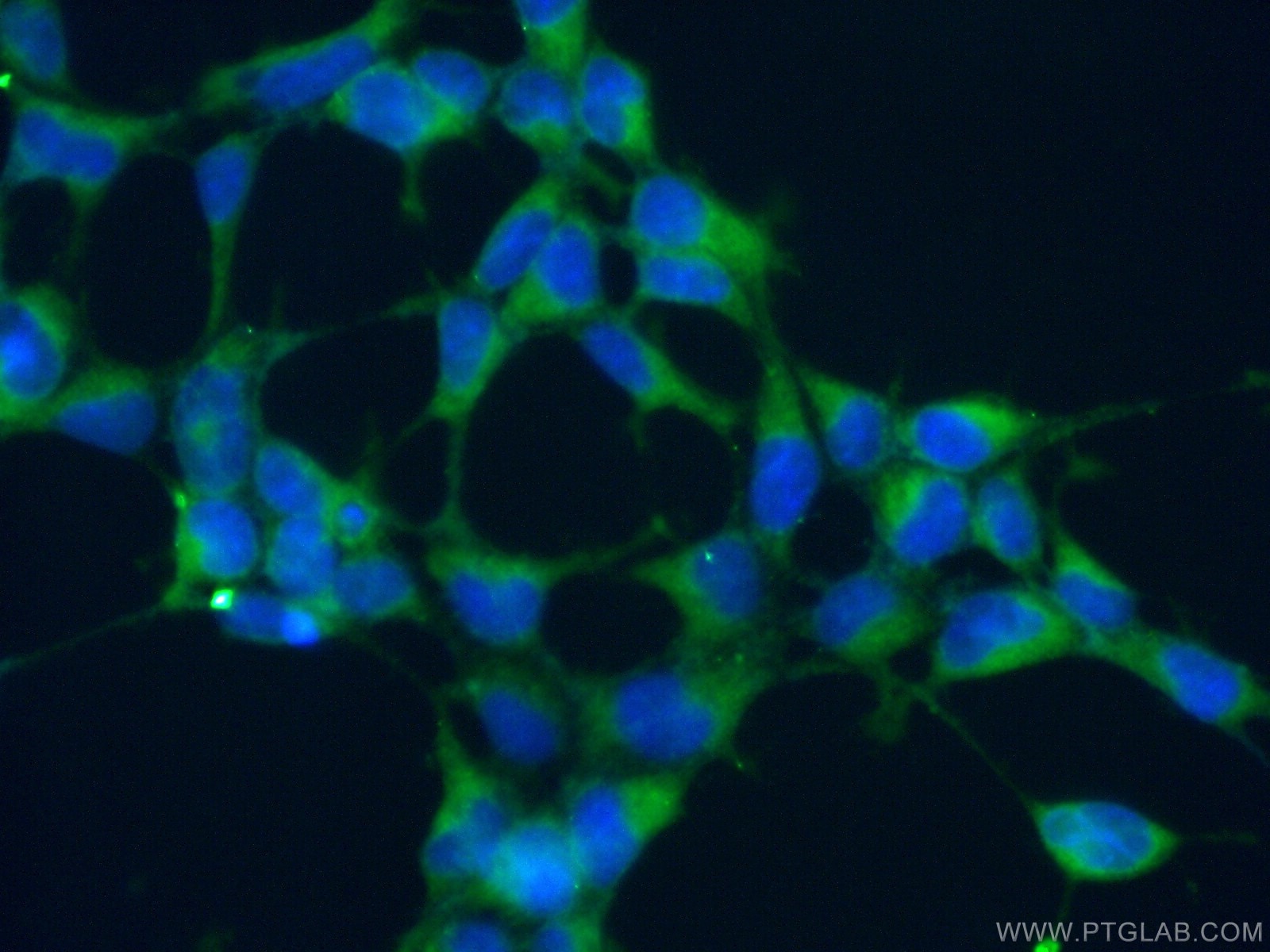- Phare
- Validé par KD/KO
Anticorps Polyclonal de lapin anti-ATP6V1G1
ATP6V1G1 Polyclonal Antibody for WB, IP, IF, IHC, ELISA
Hôte / Isotype
Lapin / IgG
Réactivité testée
Humain, rat, souris
Applications
WB, IHC, IF/ICC, IP, ELISA
Conjugaison
Non conjugué
N° de cat : 16143-1-AP
Synonymes
Galerie de données de validation
Applications testées
| Résultats positifs en WB | cellules Jurkat, tissu rénal humain |
| Résultats positifs en IP | cellules Jurkat, |
| Résultats positifs en IHC | tissu rénal humain, tissu cardiaque humain, tissu cérébral humain, tissu cutané humain, tissu hépatique humain, tissu ovarien humain, tissu placentaire humain, tissu splénique humain, tissu testiculaire humain il est suggéré de démasquer l'antigène avec un tampon de TE buffer pH 9.0; (*) À défaut, 'le démasquage de l'antigène peut être 'effectué avec un tampon citrate pH 6,0. |
| Résultats positifs en IF/ICC | cellules HEK-293 |
Dilution recommandée
| Application | Dilution |
|---|---|
| Western Blot (WB) | WB : 1:500-1:3000 |
| Immunoprécipitation (IP) | IP : 0.5-4.0 ug for 1.0-3.0 mg of total protein lysate |
| Immunohistochimie (IHC) | IHC : 1:20-1:200 |
| Immunofluorescence (IF)/ICC | IF/ICC : 1:20-1:200 |
| It is recommended that this reagent should be titrated in each testing system to obtain optimal results. | |
| Sample-dependent, check data in validation data gallery | |
Applications publiées
| KD/KO | See 2 publications below |
| WB | See 7 publications below |
| IHC | See 1 publications below |
Informations sur le produit
16143-1-AP cible ATP6V1G1 dans les applications de WB, IHC, IF/ICC, IP, ELISA et montre une réactivité avec des échantillons Humain, rat, souris
| Réactivité | Humain, rat, souris |
| Réactivité citée | rat, Humain, souris |
| Hôte / Isotype | Lapin / IgG |
| Clonalité | Polyclonal |
| Type | Anticorps |
| Immunogène | ATP6V1G1 Protéine recombinante Ag9217 |
| Nom complet | ATPase, H+ transporting, lysosomal 13kDa, V1 subunit G1 |
| Masse moléculaire calculée | 118 aa, 14 kDa |
| Poids moléculaire observé | 14 kDa |
| Numéro d’acquisition GenBank | BC008452 |
| Symbole du gène | ATP6V1G1 |
| Identification du gène (NCBI) | 9550 |
| Conjugaison | Non conjugué |
| Forme | Liquide |
| Méthode de purification | Purification par affinité contre l'antigène |
| Tampon de stockage | PBS avec azoture de sodium à 0,02 % et glycérol à 50 % pH 7,3 |
| Conditions de stockage | Stocker à -20°C. Stable pendant un an après l'expédition. L'aliquotage n'est pas nécessaire pour le stockage à -20oC Les 20ul contiennent 0,1% de BSA. |
Protocole
| Product Specific Protocols | |
|---|---|
| WB protocol for ATP6V1G1 antibody 16143-1-AP | Download protocol |
| IHC protocol for ATP6V1G1 antibody 16143-1-AP | Download protocol |
| IF protocol for ATP6V1G1 antibody 16143-1-AP | Download protocol |
| IP protocol for ATP6V1G1 antibody 16143-1-AP | Download protocol |
| Standard Protocols | |
|---|---|
| Click here to view our Standard Protocols |
Publications
| Species | Application | Title |
|---|---|---|
J Cell Physiol A pH-sensitive luminal His-cluster promotes interaction of PAM with V-ATPase along the secretory and endocytic pathways of peptidergic cells. | ||
EBioMedicine A GBM-like V-ATPase signature directs cell-cell tumor signaling and reprogramming via large oncosomes.
| ||
EBioMedicine Specific V-ATPase expression sub-classifies IDHwt lower-grade gliomas and impacts glioma growth in vivo. | ||
Autophagy Inhibition of autophagy and induction of glioblastoma cell death by NEO214, a perillyl alcohol-rolipram conjugate | ||
